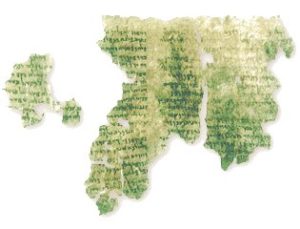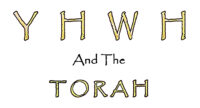INTRODUCTION
Although there is some controversy regarding whether the Book of Ḥanoḵ (Enoch) should be included amongst canonical Scripture, it is evident that the group of believers responsible for writing the Dead Sea Scrolls held the Book of Ḥanoḵ in similar regard to other Books of Scripture.
A number of fragments from the Book of Ḥanoḵ were found together with fragments from 28 other First Covenant Books in Cave 4, which was discovered and excavated in 1952, after the initial discoveries of Cave 1 and the scrolls contained within in 1947. Of all the caves in the Qumran region, Cave 4 contained the largest number of scrolls by far. They are mostly very fragmentary and it took 50 years to publish them all.
Among the hundreds of thousands of scroll fragments, Cave 4 contained a number of fragments, but no extensive portions of the Book of Ḥanoḵ. Chapters 16-17, much of 24, 72-75, and 80-81 are missing, and only extremely brief passages from about 44 chapters survive. The manuscripts date from the early 2nd century BCE to the Herodian period, and at least the Book of Astronomy predates the Book of Dani’ĕl.
Yahuḏah (Jude) also quotes from the Book of Ḥanoḵ 1:9 –“And Ḥanoḵ, the seventh from Aḏam, also naḇu of these, saying, “See, 𐤉𐤄𐤅𐤄 comes with His myriads of qodeshim, to execute judgment on all, to punish all who are wicked among them concerning all their wicked works which they have committed in a wicked way, and concerning all the harshness which wicked sinners have spoken against Him.” Yahuḏah 1:14-15
The Book of Ḥanoḵ was of course known before the Dead Sea Scrolls discovery, and is recorded in Ethiopic manuscripts and manuscripts of five component parts of Ḥanoḵ have also come to light in Aramaic: Watchers (chs 1-36), Astronomy (chs 72-82), Dreams (chs 83-90), Epistle and Appendix of Ḥanoḵ (chs 91-108).

IMAGE
4QEnoch fragment 1, pieces c,d and e cols 2 and 3, containing
parts of Ḥanoḵ chapters 2-8, from the Book of the Watchers
